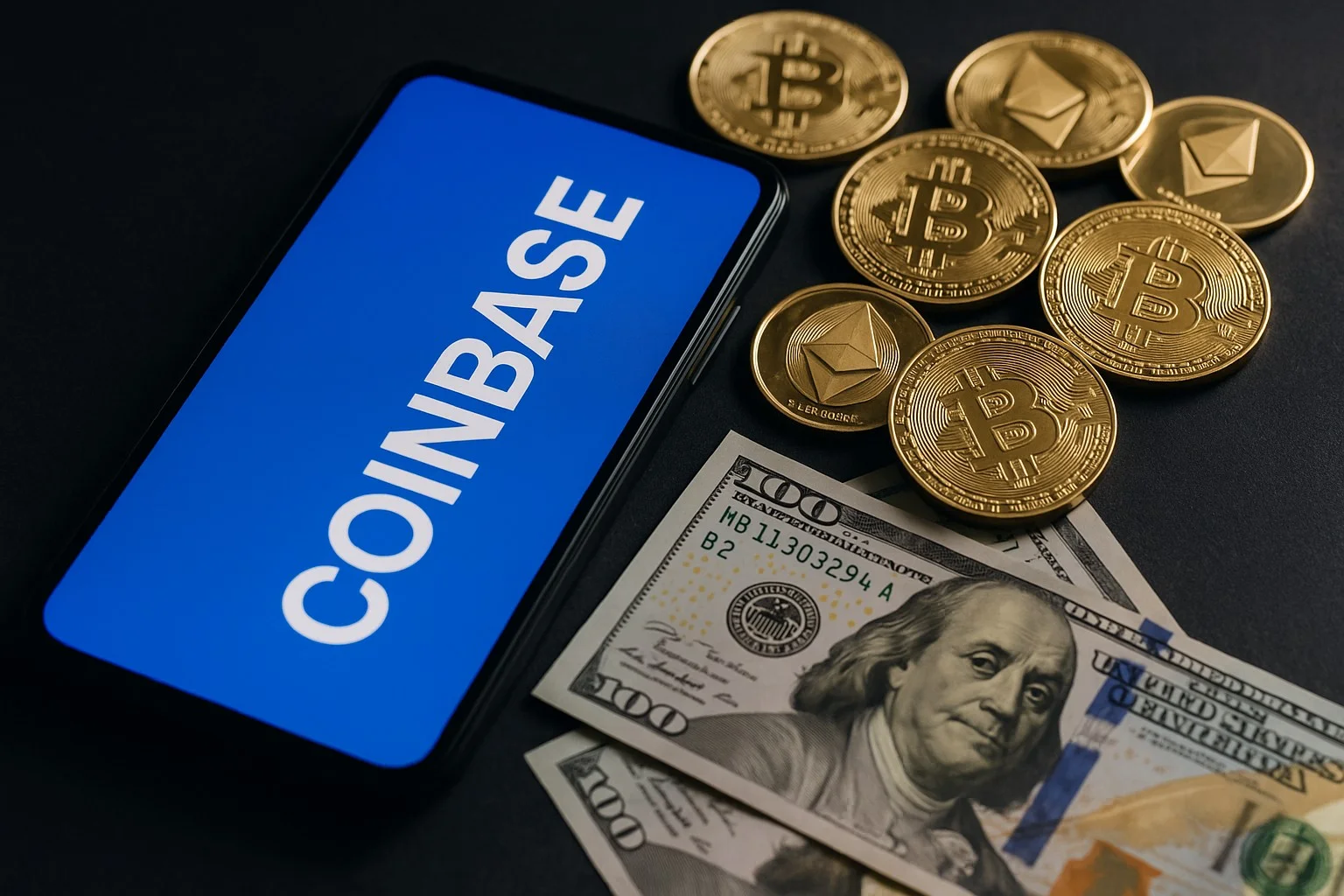News
Blockchain News
Blockchain News
Browse all Blockchain related articles and news. The latest news, analysis, and insights on Blockchain.
Sui Prepares to Launch Two New Altcoins
The Sui blockchain, which is rapidly gaining prominence among Layer-1 solutions, is poised to introduce a major innovation to its ecosystem. Sui Group, Ethena, and the Sui Foundation will launch two new stablecoins: USDi and suiUSDe. This initiative marks the first time native stablecoins will be traded on the Sui network.One stablecoin will be backed by BlackRockUSDi will be backed 1:1 by BlackRock's tokenized money market fund, BUIDL. This fund, issued through Securitize, brings the secure nature of traditional finance to the blockchain environment. Meanwhile, suiUSDe will be a synthetic dollar backed by digital assets and derivatives, similar to Ethena's $14 billion USDe stablecoin model. This structure is expected to provide yield for users. Marius Barnett, President of Sui Group, said, “We believe this initiative will increase liquidity on the Sui blockchain, expand its use cases, and create long-term value. It will also make Sui Group one of the first public gateways to the global stablecoin economy.”Stablecoin competition is heating upIn the cryptocurrency sector, stablecoins have long been centered around Tether’s USDT and Circle’s USDC. However, recently, various projects have begun launching their own stablecoins. The Layer-1 network HYPE held an auction for the right to issue the USDH stablecoin; Native Markets, in partnership with Stripe, won this auction, aiming to reduce the ecosystem’s dependence on USDC. Similarly, the Ethereum scaling solution MegaETH plans to partner with Ethena to launch a native stablecoin.Sui’s new move is a strong example of this trend. In August, stablecoin transfer volume on the Sui blockchain exceeded $229 billion, setting a new record. This high volume particularly attracted the attention of Ethena Labs. The company's CEO, Guy Young, said, "Sui's performance and interoperability were decisive for us."Sui Group, listed on Nasdaq, recently announced that its SUI token holdings exceeded $300 million. The company is able to purchase tokens at a discount thanks to a special agreement with the Sui Foundation. Previously operating under the name Mill City Ventures, the institution established its crypto treasury with a $450 million private placement.The Sui blockchain is a Layer-1 solution operating with a proof-of-stake mechanism and positioned as an alternative to networks like Ethereum and Solana. The native stablecoin initiative is considered a significant step that will strengthen Sui's position in the ecosystem. At the time of writing, the SUI price is trading at $3.5, a 1% increase. USDi and suiUSDe, expected to launch this year, will facilitate users' access to dollar-pegged assets on the Sui network. This move is considered important in terms of increasing liquidity, integration with DeFi protocols, and providing users with access to a wider range of financial instruments.
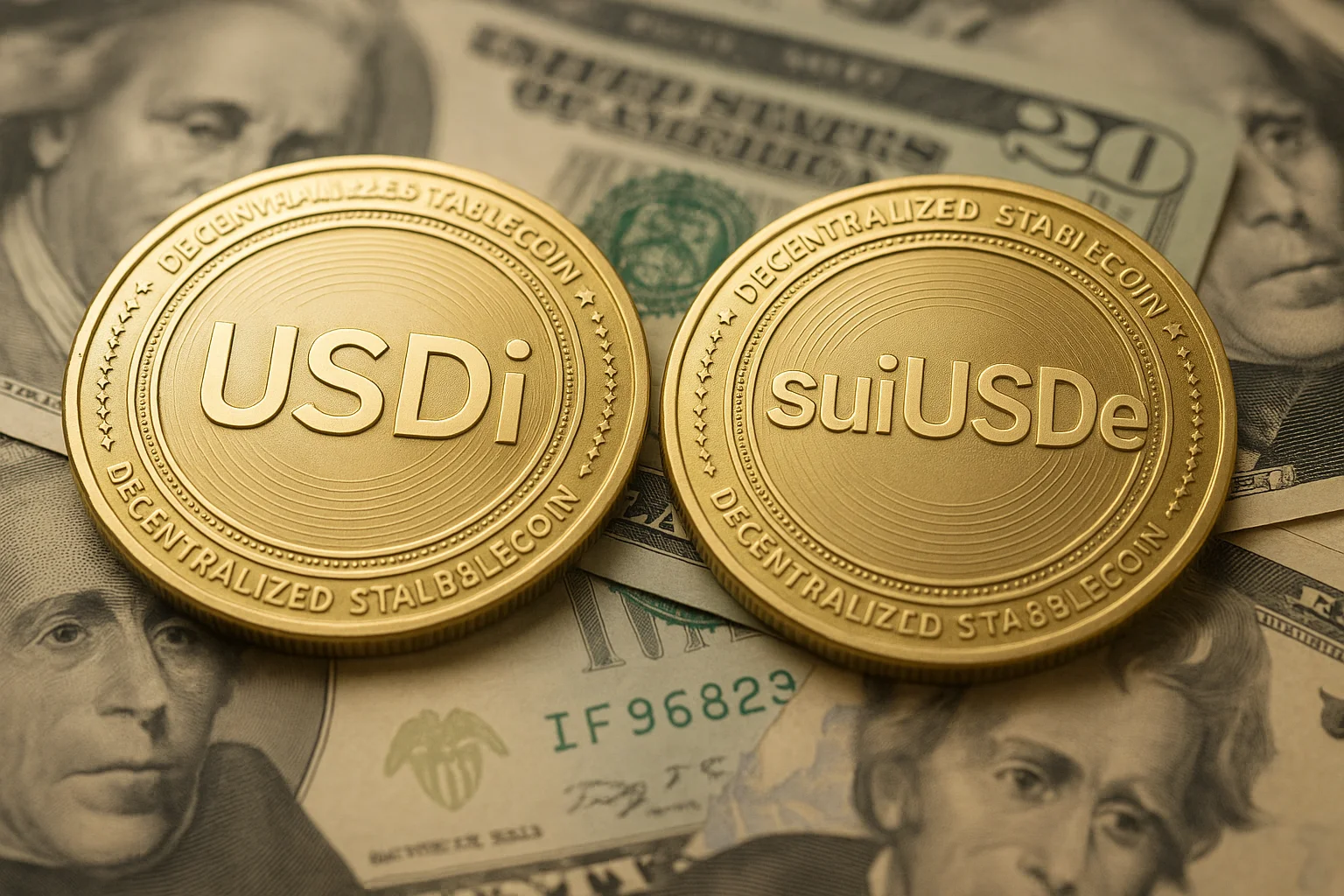
PayPal's Stablecoin PYUSD Opens to Nine New Blockchain Networks
PayPal is significantly expanding the reach of its dollar-backed stablecoin, PYUSD. Issued by Paxos Trust Company in 2023 and initially launched on Ethereum, PYUSD quickly expanded to Solana, Arbitrum, and Stellar. Now, thanks to the LayerZero integration, it is available on nine more blockchains. The new integration creates a permissionless version of PYUSD, dubbed "PYUSD0." This version, operating via LayerZero's Stargate Hydra bridge, will have exactly the same functionality as the original PYUSD. Whether users use the native PYUSD on Ethereum, Solana, or Stellar, or PYUSD0 on LayerZero-supported chains, the token is 1:1 exchangeable with US dollars and will be considered the same stablecoin.What are the new networks?The expanded networks include Tron, Avalanche, Sei, Aptos, Abstract, Ink, and Stable. Previously issued by the community, Berachain (BYUSD) and Flow (USDF) will also be upgraded to PYUSD0. This will bring PayPal's stablecoin to not only a few major chains but also rapidly growing new ecosystems.This move follows PayPal's LayerZero collaboration launched last year. At the time, PYUSD adopted LayerZero's omnichain token standard, enabling transfers between Ethereum and Solana without the need for centralized platforms. Now, this feature is being expanded to a wider audience.The current circulating supply of PayPal USD is approximately $1.9 billion. This figure is significantly lower than Tether's $171 billion USDT or Circle's $74 billion USDC. However, given the rapid growth of the stablecoin market across the industry, PayPal's actions are expected to give it a significant strategic position in the long term. The US Treasury Department predicts that the stablecoin market could reach $2 trillion by 2028. LayerZero Labs CEO Bryan Pellegrino emphasized that the integration is not just a technical advancement but also a strong sign of the future of the financial system. According to Pellegrino, stablecoins will be the cornerstone of a borderless, 24/7 global financial market.David Weber, CEO of the PayPal ecosystem, said, “By working with LayerZero, we are bringing PYUSD to new markets faster. We are maintaining both compatibility and cross-chain interoperability from the start.”This week, the company also introduced a new peer-to-peer payment feature called “PayPal Links.” This system, which will allow users to easily send payments through personal connections, is planned to integrate Bitcoin, Ethereum, PYUSD, and other assets soon. This will support PayPal’s stablecoin strategy not only with blockchain integrations but also with everyday payment solutions.
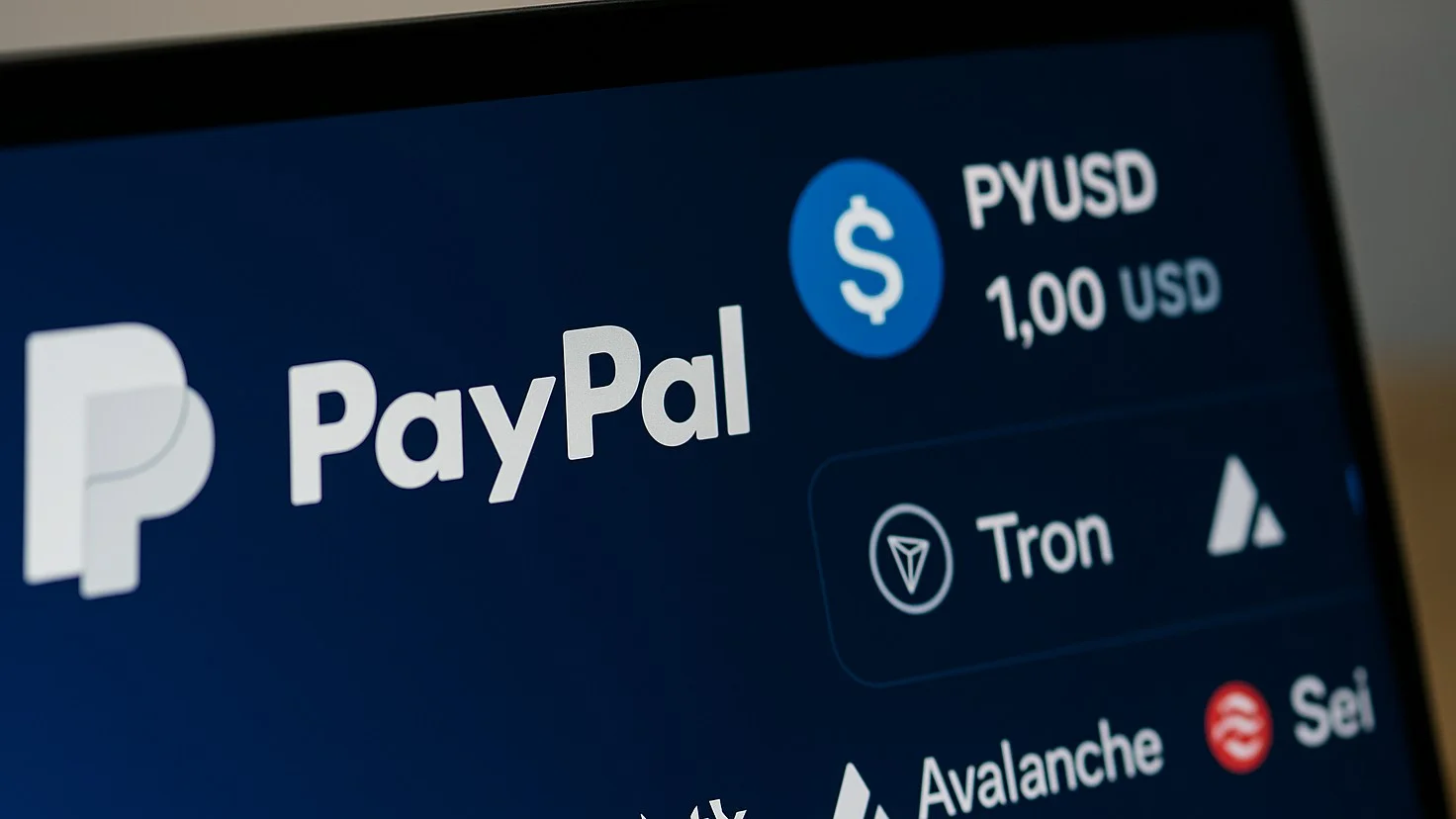
DBS, Franklin Templeton, and Ripple Announce Partnership
DBS, Franklin Templeton, and Ripple have signed a noteworthy collaboration in the financial world. The three institutions have signed a memorandum of understanding (MoU) to develop trading and lending products with tokenized money market funds on the XRP Ledger. This step aims to both accelerate the integration of traditional financial institutions onto the blockchain and provide investors with stable returns and liquidity.Franklin Templeton's fund on the XRP LedgerAs part of the agreement, Franklin Templeton will tokenize its US dollar-denominated short-term money market fund and move it to the XRP Ledger under the name sgBENJI. DBS Digital Exchange (DDEx) will list the sgBENJI token alongside Ripple's stablecoin, Ripple USD (RLUSD). This will allow DBS clients to switch between the stablecoin and the yield-generating fund 24/7, allowing them to balance their portfolios even during volatile periods.Nigel Khakoo, Ripple's Head of Global Trading and Markets, described this collaboration as a "game-changer." Khakoo emphasized that investors can increase capital efficiency and liquidity by leveraging both a stablecoin and a tokenized fund within a trusted ecosystem. According to him, 2025 will go down in history as a period in which traditional financial institutions take unprecedented steps on blockchain. Source: Ripple.com DBS Digital Exchange CEO Lim Wee Kian similarly stated that tokenized securities play a significant role in increasing efficiency and liquidity in global markets. It was also stated that DBS may, in the future, offer sgBENJI holders the opportunity to obtain loans from banks or third-party platforms using their tokens as collateral. This will allow investors to access loans while holding their assets.Franklin Templeton's launch of its tokenized fund on the XRP Ledger creates an attractive platform for institutional investors thanks to this blockchain's low transaction fees and fast transaction capacity. In conjunction with Ripple's stablecoin, RLUSD, this structure could usher in a new era for repo transactions and tokenized collateral mechanisms. This initiative comes at a time when institutional investors are showing increasing interest in crypto assets. Data shared by Ripple shows that 87% of institutions plan to allocate funds to this area by 2025. Furthermore, the growing role of tokenized assets in global markets reinforces the importance of this collaboration. For example, banks based in Japan and Singapore are testing cross-border payments with multi-currency tokenized deposits, which points to the same trend.The partnership between DBS, Franklin Templeton, and Ripple builds a critical bridge at the intersection of traditional and digital finance. Investors will now have access to regulated, income-generating tokenized funds, in addition to crypto assets.
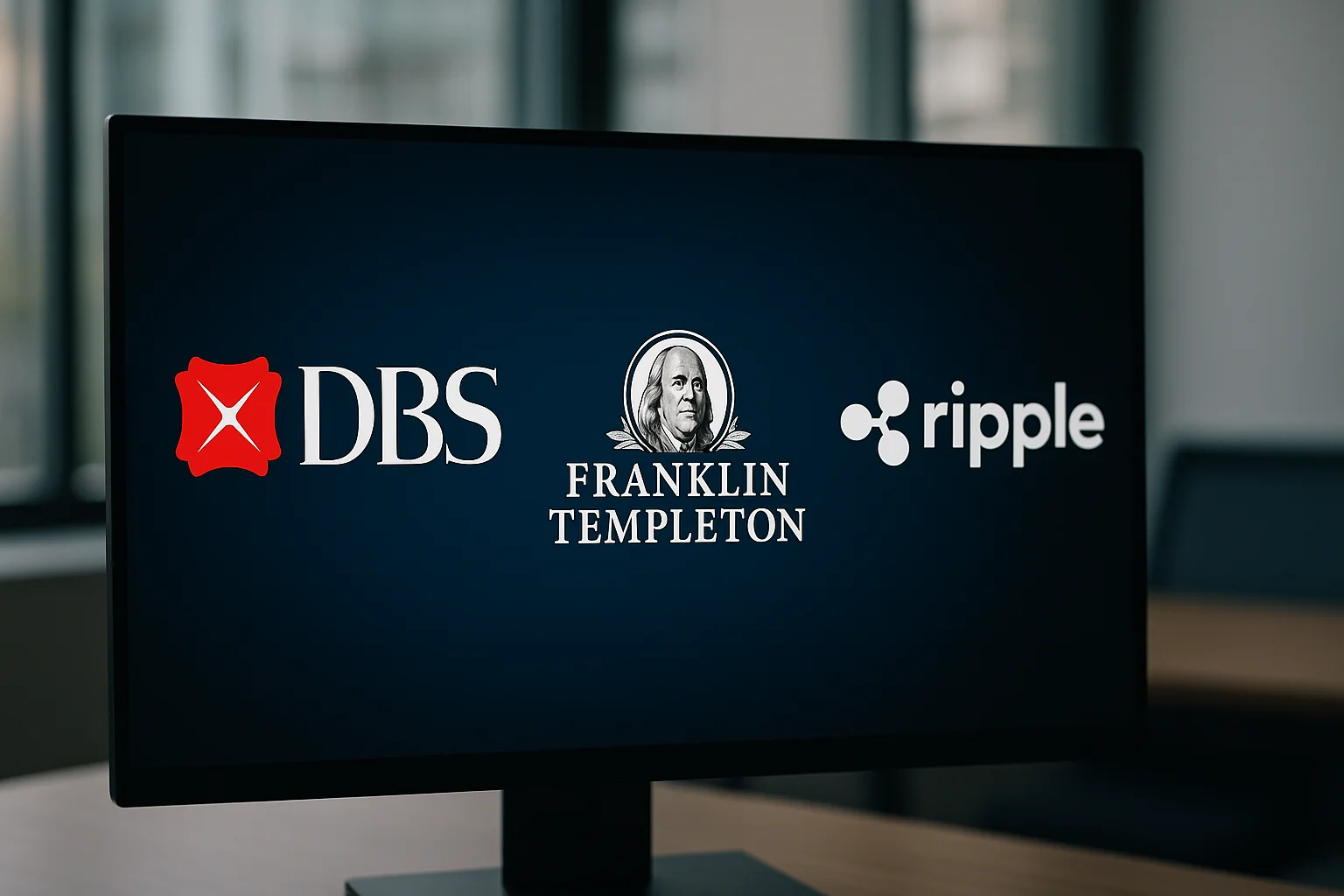
Google Adds Stablecoin Support to AI Payment System: Partners with Coinbase
Google has announced a new open-source payment protocol that will facilitate money transfers between AI applications. According to Fortune, this system will support not only traditional payment methods like credit and debit cards but also stablecoins. The integration of stablecoins, also known as cryptocurrencies pegged to the US dollar, is a critical development.Google Worked on Stablecoins for AI ApplicationsThe company partnered with Coinbase to ensure stablecoin compatibility. Coinbase was already developing its own AI and crypto payment infrastructure. In addition to the Ethereum Foundation, more than 60 organizations, including American Express, Salesforce, and Etsy, contributed to the development of this protocol. James Tromans, President of Google Cloud Web3, said, “When designing the system from scratch, we considered both existing payment infrastructures and future innovations like stablecoins.”This development is driven by the rapidly rising AI "agent" trend. Agents are algorithms that perform specific tasks on behalf of the user. Some write code, while others shop at online stores. A common view in the tech world is that in the near future, AIs will communicate directly with each other. If this scenario materializes, an AI financial advisor will be able to find the best mortgage by talking to digital representatives from different banks; or a virtual shopping assistant will be able to interact with the AI of a clothing store to purchase the right product for the user.Google Releases ProtocolBuilding on this prediction, Google released a protocol last April to allow agents to communicate with each other. The new payment protocol announced now expands this framework. This aims to ensure that financial transactions between the two AI agents are secure, transparent, and aligned with user intent.Erik Reppel, head of engineering at Coinbase, stated that Google and its payment infrastructures have been aligned, saying, "Our goal is to enable AIs to transfer value to each other."This move demonstrates that Google is one of the few major tech companies openly interested in stablecoins. With the advent of a more crypto-friendly government in the US, companies like Apple, Meta, and Airbnb are also reportedly working on stablecoin integration. In June, Shopify announced that it would offer stablecoin payments to its users before the end of the year.

London Stock Exchange Makes Historic Move: Funds Open to Transactions on Blockchain
The London Stock Exchange has taken a historic step in tokenization. The company has officially launched a new platform that enables the digitization, issuance, and settlement of private funds on the blockchain.The system, announced by the London Stock Exchange Group (LSEG) as the "Digital Markets Infrastructure" (DMI), is built on Microsoft Azure. The platform allows private markets funds to create and manage tokenized financial instruments within existing regulatory frameworks. One of the first implementations was carried out by Bermuda-based investment manager MembersCap. The company raised capital by tokenizing its fund, "MCM Fund 1," through this system. London-regulated exchange Archax served as the nominee in this process.LSEG officials stated that this is only the first phase and that different asset classes will be integrated into the platform as part of the tokenization process in the future.The transition from traditional to digital is underwayThe tokenization trend has rapidly gained momentum in the financial world in recent years. Representing traditional securities on the blockchain makes issuance, transaction, and settlement processes more efficient. Dr. Darko Hajdukovic, Head of Digital Markets at LSEG, stated that many processes in private markets today are costly and complex, and that tokenization could overcome these obstacles.According to proponents, tokenization both reduces back-office costs and offers broader market access. Furthermore, 24/7 trading adds a new dimension to liquidity.Major investment firms such as BlackRock and Franklin Templeton have already begun offering billions of dollars in money market products to investors on blockchain. The size of assets managed on Ethereum and similar networks is rapidly increasing.Global competition heats upLSEG's move comes on the heels of Nasdaq's remarkable filing with the Securities and Exchange Commission (SEC) in the US. Nasdaq is requesting that tokenized securities be allowed to trade on the same order book as traditional stocks, provided certain conditions are met. If approved, this implementation could be implemented as early as 2026. However, major banks like JPMorgan argue that the tokenization of real assets is still progressing slower than expected and that scalability will take time.$30 trillion potentialNevertheless, the potential is substantial. According to Standard Chartered analysts, the market created by migrating real assets to blockchain could reach $30 trillion by 2034. According to data from The Block, the total value locked in tokenized real asset products and protocols has now surpassed $13 billion.
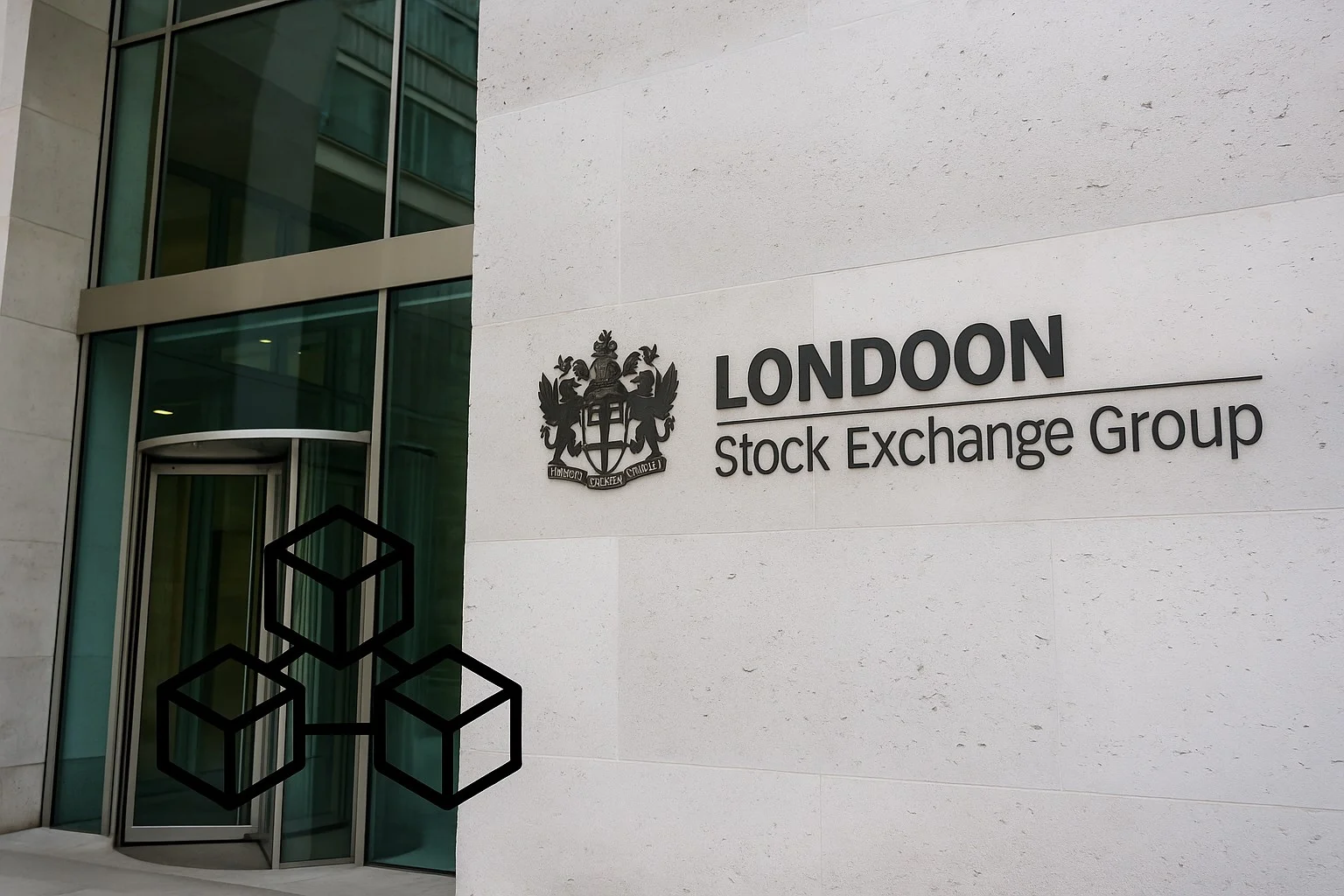
BlackRock Prepares to Tokenize ETFs: $2 Trillion on the Table
BlackRock, the world's largest asset manager, has taken action to bring exchange-traded funds (ETFs), one of the most popular investment vehicles in traditional finance, to the blockchain world. According to Bloomberg, the company is working on different models for tokenizing ETFs tied to real assets like stocks. Regulatory approval is the most critical stage of the process.This move by BlackRock is a natural continuation of the company's strategy for digital assets. Launched in 2024, its tokenized money market fund, called BUIDL, quickly reached over $2 billion and found significant use in the crypto ecosystem. That same year, the firm's spot Bitcoin ETF also became one of the most successful fund launches in history.Tokenization refers to creating digital representations of traditional financial assets on the blockchain. Tokenizing ETFs can allow investors to trade outside market hours, facilitate international access, and pave the way for tokens to be used as collateral in the crypto ecosystem. Proponents argue that this model: It will offer advantages such as instant reconciliation, fragmented ownership, and more efficient market structures.Interest in this area is rapidly growing in the sector. Major managers such as Franklin Templeton have already launched tokenized fund classes. BlackRock previously conducted similar tests on JPMorgan's Onyx (now Kinexys) blockchain. The company's CEO, Larry Fink, has long argued that every financial asset will eventually be tokenized. In his annual letter to investors in 2025, he reiterated that tokenization has the potential to transform financial markets.The market's size is striking. According to research by Animoca Brands, the tokenization of real assets has the potential to transform the $400 trillion traditional financial market. By 2025, the total value of tokenized real assets reached a record $26.5 billion, representing a 70 percent increase since the beginning of the year. US bonds and private loans, in particular, account for 90 percent of the total tokenization volume. Skynet's 2025 RWA Security Report predicts the market could reach $16 trillion by 2030.Tokenization initiatives are on the riseInitiatives in this area have also increased. In September, Ondo Finance announced Ondo Global Markets, offering tokenized access to over 100 US stocks and ETFs on Ethereum. In Asia, SBI Holdings partnered with Startale to develop an on-chain tokenized platform for institutional investors.While the opportunities are significant, regulatory and technical hurdles remain significant. While traditional ETFs are processed through Wall Street clearinghouses, tokenized assets operate with instant settlement. This difference has sparked significant debate regarding regulation and custody solutions. However, US regulators are increasingly open to controlled testing of blockchain-based market models. Nasdaq has also applied for approval to allow trading of tokenized stocks. BlackRock's digital asset offensive is also reflected in its financial statements. The company reported net inflows of $14.1 billion in the second quarter of 2025, bringing its total digital asset management to $79.6 billion. While this figure represents only 1% of its $12.5 trillion in total assets, it stands out as one of the fastest-growing segments. Inflows into digital assets have reached $17 billion since the beginning of the year.In particular, the company's spot Bitcoin ETF, IBIT, surpassed the gold-focused SPDR Gold Trust with $6.96 billion in inflows in 2025, making it the sixth most popular ETF in the US.
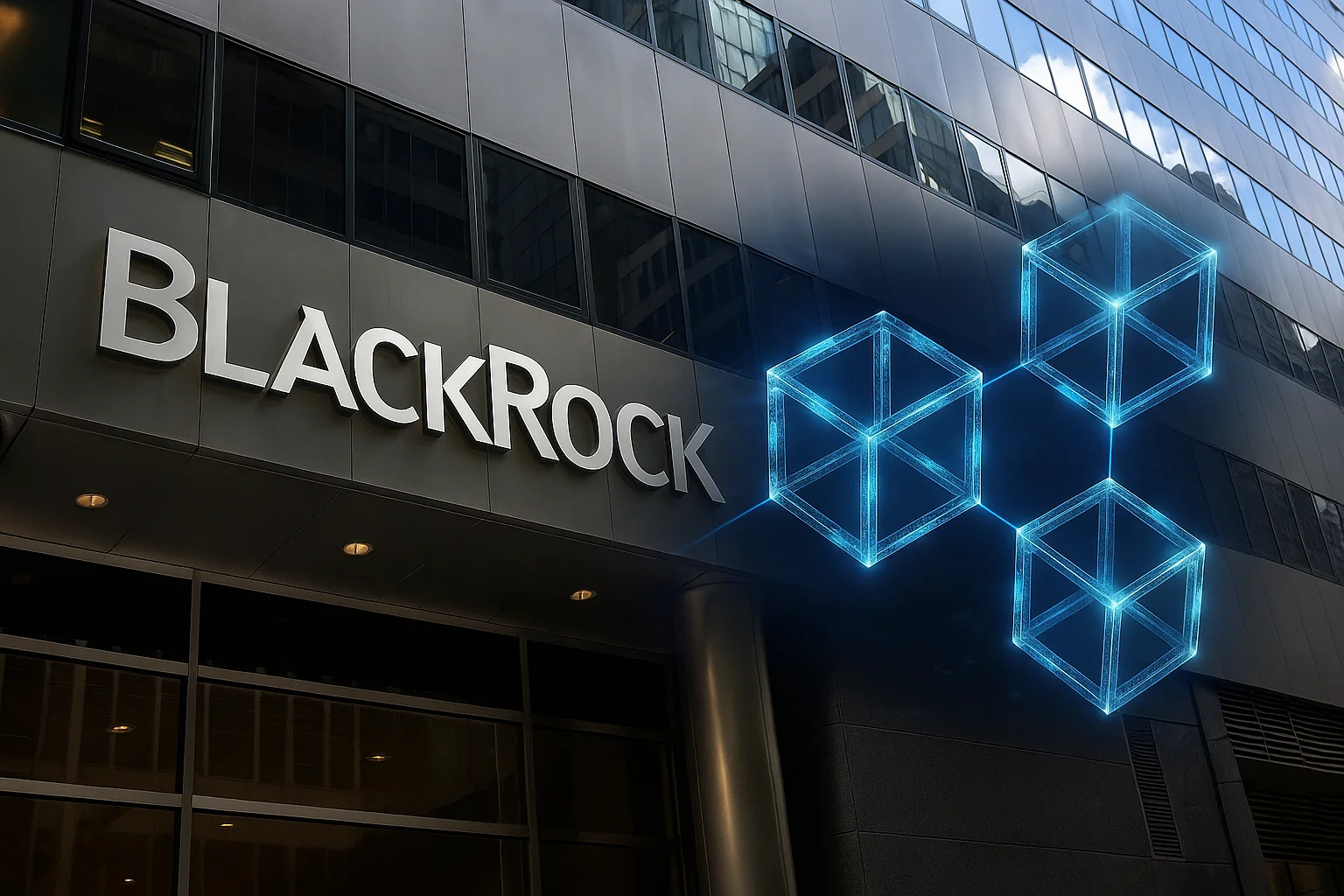
Sui-Based Altcoin Hit for $2.4 Million
The world of decentralized finance (DeFi) has once again been shaken by news of a cyberattack. Nemo Protocol, a yield platform built on the Sui blockchain, announced that it had lost approximately $2.4 million worth of stablecoins due to a security vulnerability over the weekend. In the incident, first reported by security firm PeckShield, the attacker reportedly transferred stolen USDC tokens from Arbitrum to the Ethereum network. This moved the assets into an ecosystem where they could be more easily moved and difficult to monitor.All smart contracts have been haltedThe Nemo team confirmed the attack in a statement on Telegram on Monday, announcing the incident to the community:“Dear Nemo community, last night there was a security incident affecting the Market pool. We are investigating the issue and have temporarily halted all smart contract activity. We will share new information as we receive it.”It is also noteworthy that the platform has entered a previously scheduled maintenance period. Nemo had previously announced that the application would be under maintenance on Monday and Tuesday. Therefore, the attack's emergence coincided almost simultaneously with the maintenance period.Are the assets safe?Nemo Protocol emphasized that the attack only affected a specific pool and that the assets held in the vaults were safe. However, a clear explanation has not yet been released regarding the root cause of the incident. This uncertainty has shaken investor confidence and once again highlighted the ongoing security vulnerabilities in DeFi protocols.Following the attack, the total locked assets (TVL) on the platform experienced a significant decline. According to DeFiLlama data, Nemo Protocol's TVL fell from $6 million to $1.53 million. This decline indicates that investors were rapidly withdrawing their funds from the platform.What is Nemo Protocol?Nemo Protocol is a yield optimization and yield trading platform built on the Sui blockchain. It offers users the ability to tokenize their investments. The platform divides assets into Principal Tokens (PT) and Yield Tokens (YT), allowing users to buy and sell these tokens, hedge future returns, or take speculative positions.While yield tokenization, in particular, is becoming increasingly popular in the DeFi world, Nemo Protocol was one of the prominent projects in the Sui ecosystem. However, the recent incident may cause investors to re-evaluate their trust in such new projects.Billions of dollars worth of assets have been lost in recent years due to smart contract vulnerabilities and protocol flaws. The transparency and freedom offered by decentralized finance also create attractive opportunities for malicious actors.

Fed's Agenda: Stablecoin, DeFi, and Artificial Intelligence: All Eyes on That Date
The US Federal Reserve announced that it will hold a major conference on October 21, 2025, to discuss the role of innovation and emerging technologies in payment systems. This Fed event will address critical topics for both traditional finance and the crypto ecosystem: stablecoins, decentralized finance (DeFi), tokenization, and the integration of artificial intelligence into payment infrastructure. Conference Main AgendasAccording to the Fed's statement, the conference will specifically address how to make payment systems more secure, faster, and more efficient. Fed Governor Christopher Waller emphasized that innovation is essential to meeting changing customer and business needs. Waller said, "I look forward to examining the opportunities and challenges of new technologies, bringing together ideas that will enhance the security and efficiency of payments, and hearing directly from those shaping the future." Panel discussions to be highlighted at the event include:The convergence of traditional finance and DeFi modelsStablecoin use casesArtificial intelligence applications in payment systemsTokenization of financial products and servicesAnother topic on the Fed's conference agenda is the potential impact of stablecoin reserves on the banking system. Previously released Federal Open Market Committee (FOMC) minutes indicated that dollar-denominated stablecoins could increase payment efficiency but also introduce regulatory requirements for the banking sector.Trump-era policies and the Fed's new directionThis move by the Fed is being interpreted as a sign of a more flexible approach to crypto assets in the US. Steps taken during the Trump administration, in particular, paved the way for the central bank to develop a more open perspective on the crypto and stablecoin markets.In April, the Fed withdrew previous guidance that made it difficult for banks to offer crypto asset services and terminated its special oversight program for banks dealing in digital assets. This development was also seen as the end of "crypto debanking" practices, which had long been a source of complaints in the industry.Furthermore, the GENIUS Act, enacted in July, established a comprehensive federal regulatory framework for stablecoins. This law increased the auditability of stablecoins and paved the way for their wider use in the financial system.Christopher Waller is one of the most prominent figures in this process. Appointed to the Fed by Trump, Waller describes blockchain-based financial infrastructures as a "technological evolution." In his speech at the Wyoming Blockchain Symposium, he compared DeFi transactions to credit card transactions and argued that smart contracts and distributed ledgers are a natural evolution for the financial system.Strategic Move for the Dollar's Global Reserve Currency StatusThe Fed's strong emphasis on payments innovation is also motivated by its motivation to protect the US dollar's global reserve currency status. The BRICS countries' search for alternative reserve currencies and the growing demand for gold threaten the dollar's position. Stablecoins' ability to facilitate rapid global transfers is seen as a critical tool for maintaining the dollar's effectiveness.Waller emphasized that stablecoins facilitate access to the dollar, particularly in economies experiencing high inflation and limited access to banking services. He argues that stablecoins could further expand the dollar's global use by increasing its 24/7 availability.
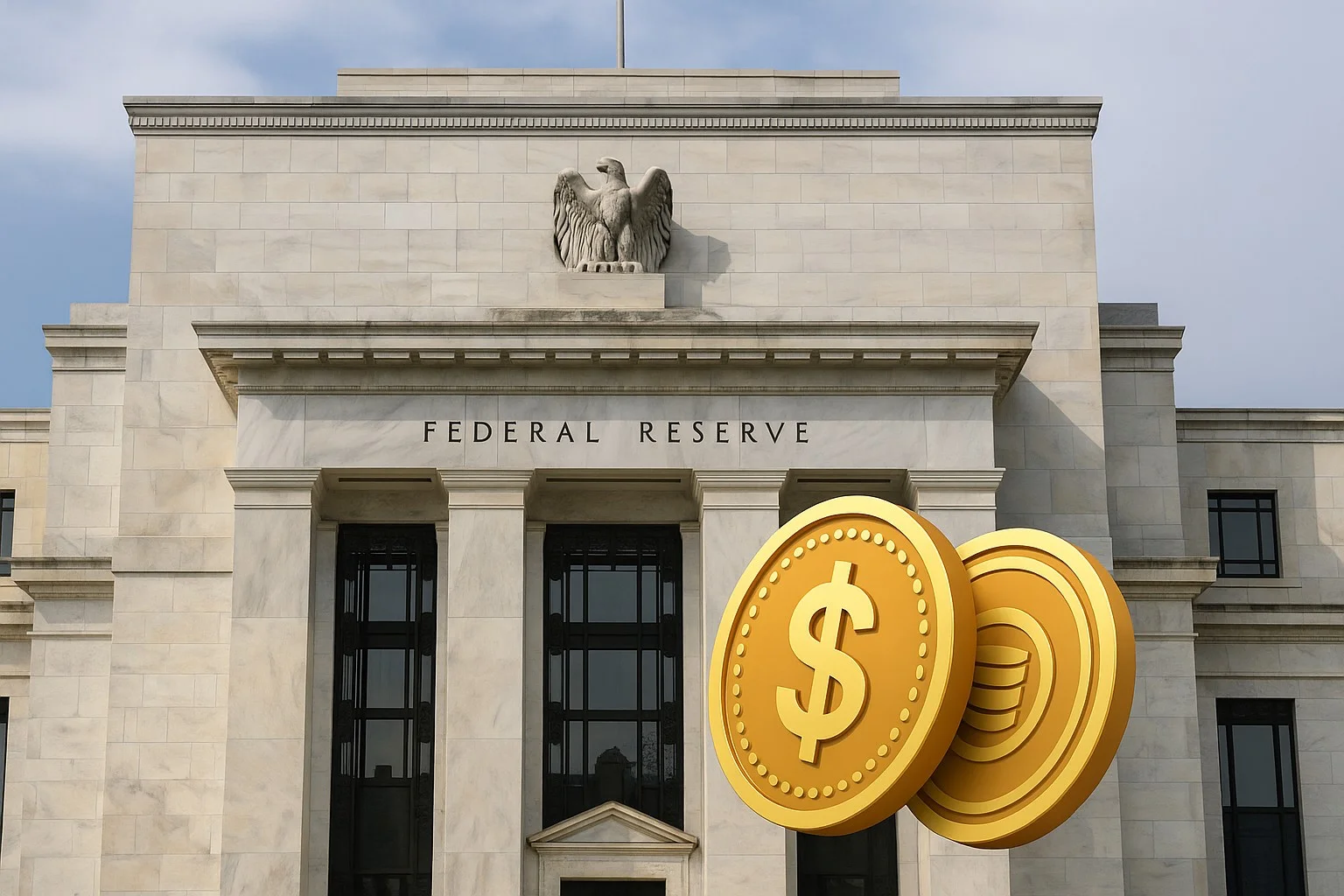
A New Era in Finance: Stocks Now on the Solana Blockchain
Crypto finance company Galaxy Digital has taken a significant step in combining traditional finance with blockchain technology. The company announced the tokenization of its Nasdaq-listed shares (GLXY) on the Solana blockchain.Galaxy Founder and CEO Mike Novogratz stated that this initiative aims to create a model that combines traditional capital markets with next-generation infrastructure. "Our goal is to create a tokenized stock that brings the best features of crypto, such as transparency, programmability, and composability, to the traditional world," Novogratz said.Galaxy and Superstate CollaborationThis project is being implemented through Superstate's "Opening Bell" platform. Superstate introduced the "Opening Bell" platform in May to bring SEC-registered stocks to the blockchain. This platform enables the issuance and trading of real SEC-registered stocks directly on-chain, rather than synthetic or derivative products. Superstate CEO Robert Leshner described this development as "the first example of a Nasdaq-listed company being tokenized on a major public blockchain." Leshner stated that Galaxy's registered shareholder list is updated in real time as tokens change hands, and that financial markets have experienced a significant upgrade with Superstate.With the tokenization process, Galaxy's shares will be held and transferred in their own crypto wallets by authorized investors who have completed KYC (Know Your Customer) processes. The company states that tokenized shares can be made accessible through Automated Market Makers (AMMs) and other decentralized finance (DeFi) platforms to increase liquidity and leverage.Tokenization Trend AcceleratesTokenization has become a rapidly growing field in recent years. According to RWA.xyz data, the total value of tokenized securities has reached $341 million. Traditionally illiquid assets, such as US Treasury bonds and private loans, are becoming more accessible thanks to blockchain technology. However, this rapid growth also raises concerns. Experts emphasize that tokenized stocks operate in a regulatory gray area and that the nature of these products can be misunderstood. "It's crucial for investors to understand that they don't own actual shares, but rather hold tokens issued by brokerage firms that allow them to benefit from the appreciation of the underlying shares," said John Murillo, chief business officer of fintech firm B2BROKER.Galaxy's move demonstrates the growing interest in moving publicly traded companies' stocks to the blockchain. Projects like Backed Finance's xStocks platform are also operating in this area. Tokenized stocks from more than 60 companies, including Netflix, Meta, and Nvidia, are offered on blockchains like Solana, BNB Chain, and Tron. Recently, xStocks announced that tokenized stock offerings are now available on Ethereum.

Google Joins the Blockchain Race: Testing Its Own Network
Technology giant Google has taken a new step that could revolutionize the financial services landscape. Google Cloud, its cloud arm, announced the development of its own blockchain network, Google Cloud Universal Ledger (GCUL). Currently in a private testnet phase, this platform is designed for banks, payment companies, and financial institutions. Rich Widmann, Google Cloud's Head of Web3 Strategy, explained that GCUL is positioned as a "performance-based, reliable, and neutral" blockchain solution.What does GCUL offer?According to Widmann's LinkedIn post, GCUL provides financial institutions with Python-based smart contract support. This allows banks and payment providers to automate payments and develop modern solutions for digital asset management without having to invest in complex infrastructure. Comparative table from Rich Widmann's post. Source: LinkedIn/Rick Widmann Google Cloud describes GCUL as a service accessible through a single API, equipped with functions such as payment automation and asset tokenization. It also emphasized that the system will be permissioned and focused on compliance. This could offer a significant advantage in the increasingly stringent financial world of regulations. Although Widmann describes GCUL as a Layer 1 blockchain, the platform's private and permissioned structure has sparked debate within the crypto community. Many have argued that this isn't a "decentralized" blockchain in the traditional sense, but rather a consortium chain. In other words, while it technically embodies blockchain, it will be under Google's oversight.Google's approach, characterized as a "neutral infrastructure layer," is noteworthy. In Widmann's words, "Tether doesn't use Circle's blockchain; Adyen doesn't prefer Stripe's. However, any financial institution can develop with GCUL." With this message, Google positions its platform not as an alternative to competing solutions, but as a foundational layer open to all parties.Blockchain giants in competitionGoogle's move comes at a critical juncture in the digital payments race. Players like Ripple, Circle, and Stripe are working on blockchain-based payment networks. Circle recently launched its own network, Arc, while Ripple offers the advantage of fast cross-border transfers with XRP. Stripe is testing its Tempo blockchain solution for developers.In contrast, Google touts GCUL as a "neutral and compliant" option, signaling that any financial institution can leverage blockchain advantages without being dependent on a specific company's ecosystem.Moreover, the market holds enormous potential. By 2024, stablecoin transaction volumes are projected to reach $30 trillion, surpassing giants like Visa and PayPal. With GCUL, Google aims to capture a share of this market and provide a low-cost, 24/7 infrastructure.All eyes are on 2026Google Cloud has begun developing its GCUL initiative, announced in March, in collaboration with CME Group. CME is testing pilot solutions on the platform for wholesale payments and asset tokenization. The first phase has been successfully completed, and full-scale trials are expected to continue until the end of the year. If all goes according to plan, GCUL could officially launch in 2026.

US to Publish Economic Data on Blockchain
US Commerce Secretary Howard Lutnick announced that the government will begin publishing its economic statistics on blockchain. The announcement was made at a cabinet meeting attended by President Donald Trump. Lutnick described this move as "the US entering a new era of transparency and reliability." First Step: Moving GDP Data to the ChainAccording to Secretary Lutnick, the Department of Commerce will initially publish Gross Domestic Product (GDP) data on the blockchain. The goal is to make this data more widely available and easier to distribute. Once the implementation process is complete, other key economic indicators such as inflation rates, employment reports, and the census will also be shared on the chain.As of today, much publicly available data will gain an immutable and transparent infrastructure thanks to blockchain integration. This will increase, if not the accuracy of economic indicators, then at least the trust in their distribution and storage processes.US Joins Global TrendThis development places the US among the countries using blockchain technology in public data. Estonia has been using blockchain-based infrastructure in its healthcare system since 2016. The European Union launched the European Blockchain Services Infrastructure (EBSI) in 2018. Singapore and Australia launched blockchain pilot projects for commercial documents in 2021, while California digitized 42 million vehicle registrations on an Avalanche-based blockchain last year.While this US move appears to align with global public administration trends, it also raises some controversy. Experts argue that while blockchain provides assurance regarding how data is stored and distributed, it does not guarantee its accuracy. Therefore, to completely eliminate distrust in official figures, transparency is necessary not only for the technology but also for the data production processes.Crypto-friendly policies in the Trump administrationPresident Donald Trump has long been in the news for his crypto-friendly statements. In Lutnick's words, Trump has been referred to as the "crypto president." The administration aims to increase the use of dollar-backed stablecoins, strengthen the reserve currency status of the US dollar, and integrate blockchain technology into government mechanisms. The U.S. Securities and Exchange Commission (SEC) and the Commodity Futures Trading Commission (CFTC) have recently been working to provide greater clarity on which categories crypto assets should fall into. These regulations are considered an effort to reduce uncertainty surrounding the sector.Lutnick's Crypto BackgroundHoward Lutnick was appointed Secretary of Commerce by Trump in February. Previously, he served as chairman and CEO of global financial firm Cantor Fitzgerald, and is also an active figure in the crypto markets. Cantor provided custody services to Tether, the company behind USDT, the world's largest stablecoin. Lutnick also attracted attention with his statements supporting USDT at the Bitcoin 2024 conference.

Singapore's Largest Bank DBS Launches Tokenized Investment Products on Ethereum
Singapore's largest bank, DBS, has taken a significant step to further strengthen its presence in the digital asset ecosystem. The bank announced the launch of tokenized structured notes on Ethereum, a public blockchain, for the first time. This move aims to open complex financial products, traditionally accessible only to high-net-worth investors, to a wider investor base.DBS's structured notes typically require a minimum investment of $100,000 and are often considered illiquid, tailored to private clients. However, with the bank's new tokenization model, these products will now be offered in $1,000 increments. This allows investors to trade more flexibly, manage their portfolios more easily, and react quickly to market fluctuations.Tokenization not only lowers the investment threshold but also makes products more liquid and transparent. This attracts the interest of both professional and institutional investors and reinforces Singapore's growing role as a tokenization hub. Not limited to DBS clientsThe bank's first tokenized products announced will be structured notes indexed to crypto assets. These products are designed to provide cash returns when cryptocurrency prices rise while limiting potential losses when they decline.Crucially, these products will be accessible not only to DBS's own clients but also to a broader investor base through third-party platforms. Singapore-based digital investment platforms ADDX, DigiFT, and HydraX are among the prominent partners in this distribution process.Demand is growing rapidlyDBS highlights the significant increase in institutional demand for digital assets recently. According to bank data, DBS clients alone executed over $1 billion in crypto-related options and structured notes in the first half of 2025. Trading volume increased by approximately 60% from the first quarter to the second quarter of the year.This growth is particularly linked to the proliferation of family offices and professional investors in Singapore. By 2024, the number of single-family offices in the country is expected to exceed 2,000, a 43% increase. This serves as a significant catalyst for wealthy investors to turn to digital assets.Why Ethereum?DBS has decided to launch its tokenized products on Ethereum, a public network. The bank states that Ethereum is preferred due to its global reach, mature ecosystem, and security. While many financial institutions have previously opted for more closed and private blockchains, DBS's move into Ethereum is considered a strategic step in its goal of opening up to international investors.DBS launched crypto-linked structured notes along with crypto options in 2024 and subsequently attracted attention with its stablecoin initiatives. Now, it plans to expand its range of tokenized products. The bank aims to tokenize not only crypto-based products but also equity-linked and credit-linked structured notes in the future.Li Zhen, Head of Digital Assets at DBS, stated, “Asset tokenization is the next frontier in financial market infrastructure. This step aims to meet the institutional appetite for digital assets.”
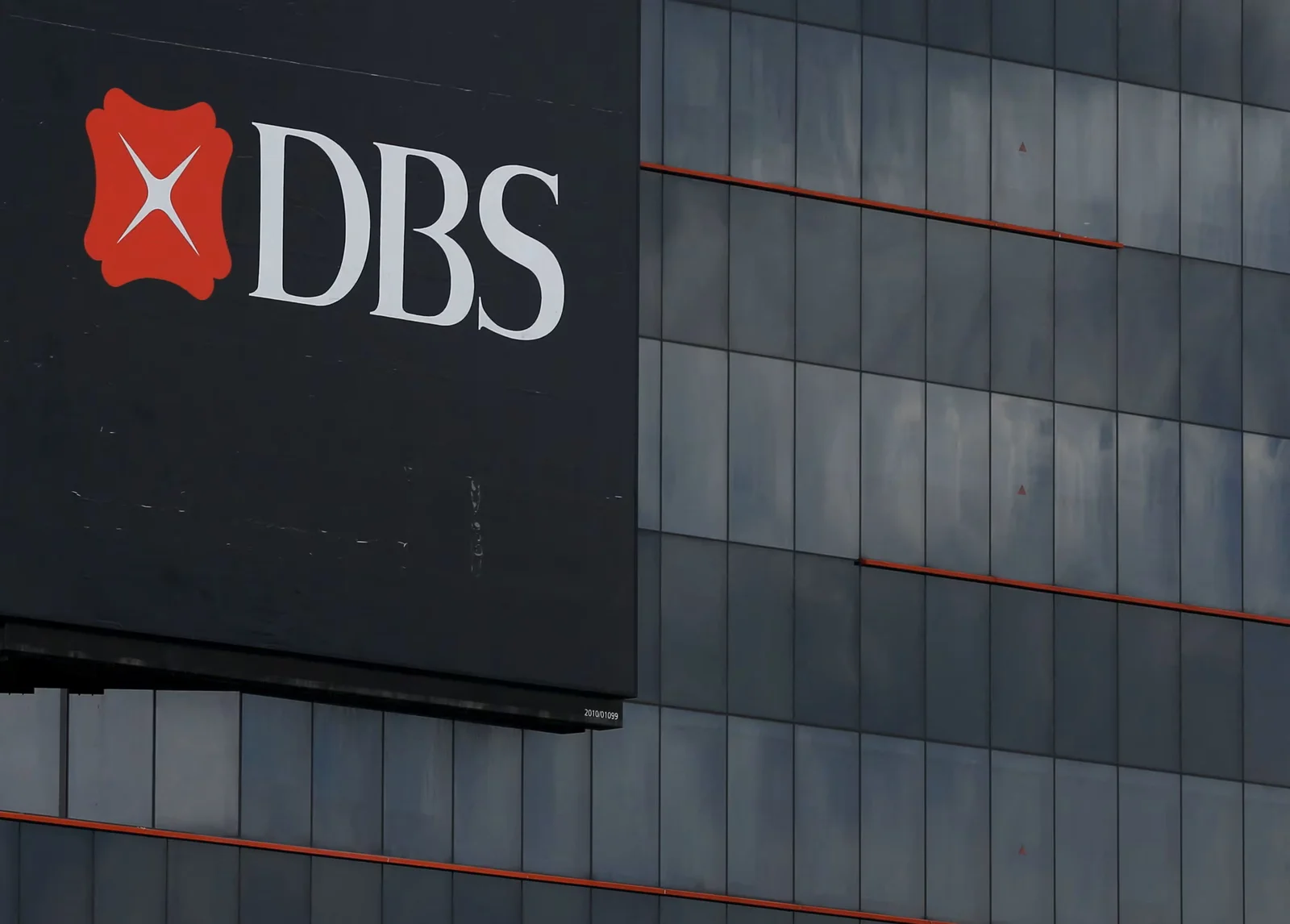
A First in the US: Wyoming Launches Its Stablecoin on 7 Major Blockchains
Wyoming, a blockchain-friendly US state, has made a first in cryptocurrency history. The state has officially launched its stablecoin, Frontier Stable Token (FRNT), fully backed by reserves. This development made history as the first stablecoin issued by a public institution in the US.Wyoming Governor and Wyoming Stable Token Commission Chairman Mark Gordon emphasized in a statement that this step is a critical milestone for the state's economy:"The mainnet launch of the Frontier Stable Token will provide our citizens and businesses with a modern, efficient, and secure means of payment in the digital age."Published on seven different blockchainsWyoming's stablecoin isn't limited to a single network. FRNT was launched simultaneously on Ethereum, Solana, Avalanche, Arbitrum, Optimism, Base, and Polygon. This multi-network strategy will allow the token to gain broader access and use across various ecosystems.However, FRNT is not yet directly tradable. However, according to the press release, the token is expected to be available on the Solana network via the Kraken exchange and on the Avalanche network via Rain's Visa integrated card platform within a few days. Fully reserve-backed, over-collateralizedReserve transparency is often a major topic of discussion in the stablecoin market. The Wyoming government aims to establish trust in this area. FRNT is backed by US dollars and short-term US Treasury bonds. A 2% over-collateralization policy provides additional protection against potential volatility.The reserves are managed by Franklin Advisers, while Fireblocks is responsible for the blockchain infrastructure, LayerZero for the token issuance process, Inca Digital for open-source intelligence, and The Network Firm for auditing and monthly reporting. All of these partnerships were selected through a formal bidding process.Compliant with Federal RegulationsFRNT's launch is part of the recently passed GENIUS Act of the United States. This law establishes clear regulations for stablecoin issuers and aims to increase market reliability. Stablecoins currently constitute a $260 billion asset class. Crypto market research firm Keyrock predicts that the stablecoin market could reach a trillion-dollar scale within the next few years and fundamentally disrupt global payment systems.Wyoming has become one of the most innovative states in the US in recent years with its blockchain-friendly legislation. The Wyoming Stable Token Commission, established in 2023, has been working on the development of FRNT and its integration into public finance. Last month, the state successfully tested real-time payments to a government contractor through the Avalanche-based Hashfire system.With this move, Wyoming is taking a leading role in the publicly backed stablecoin space not only in the US but also globally.

Was BtcTurk Hacked? Statement Released After Suspicious $50 Million Withdrawal
BtcTurk, one of Turkey's leading cryptocurrency exchanges, temporarily suspended cryptocurrency deposits and withdrawals today due to a technical issue with its hot wallets. The company stated that users would be notified when transactions reopened, and that trading, as well as Turkish Lira deposits and withdrawals, continued uninterrupted.The development came to light following findings by blockchain security firm CertiK. According to information shared by CertiK Alert, a total of over $50 million in cryptocurrency was withdrawn from three separate wallets identified as belonging to BtcTurk on August 14th. This raises the possibility of a potential security breach or system vulnerability.BtcTurk's statementIn its official statement, BtcTurk did not provide detailed information about the security of user funds, citing only a "technical issue with hot wallets." However, the exchange emphasized that trading and Turkish Lira transactions continued and that users could manage their assets. Hot wallets are known on cryptocurrency exchanges as wallets accessible via an internet connection and used for daily transactions. While these types of wallets offer the advantage of fast transfers, they are more vulnerable to cyberattacks than cold wallets. Therefore, such "suspicious exits" are of great importance to investors.The exchange stated that cryptocurrency deposits and withdrawals will be reopened once the technical issue is resolved, and that updates will be shared with users during this process. The source of the incident, whether it was a cyberattack or another technical issue, is not yet known.

Coinbase Lost $300,000 Due to 0x Protocol
Coinbase, the largest US-based cryptocurrency exchange, lost approximately $300,000 in tokens due to a faulty interaction with 0xProject's "swapper" contract. The incident was reportedly caused by a misconfiguration in one of the exchange's institutional wallets, and MEV bots, seizing the opportunity, activated and drained the funds.Anonymous security researcher Deebeez revealed on X (formerly Twitter) that Coinbase had granted token approval to the 0x "swapper" contract. This permission, normally used for token swaps, gave the contract unlimited token transfer authority. This vulnerability caused the MEV bots to withdraw all the tokens accumulated from transaction fees from Coinbase's router address. The researcher stated, "There were MEV bots waiting for users who mistakenly approved this contract. Thanks to Coinbase, their dream has come true."Coinbase StatementCoinbase Security Director Philip Martin stated that the incident was an isolated incident and was caused solely by a change to an institutional DEX wallet. Martin explained that customer assets were unaffected, all token permissions were revoked, and funds were moved to a new corporate wallet.This incident marks the second major security issue the exchange has faced in recent months. Previously, there was an insider data breach that leaked the personal information of approximately 70,000 users, and the perpetrators reportedly demanded $20 million in Bitcoin. Following that incident, Coinbase announced that it had tightened its security protocols and terminated the employment of the relevant employees.The Role of MEV BotsMEV (maximal extractable value) bots are automation tools that profit by reordering or prioritizing blockchain transactions. While these bots typically target token launches, NFT mints, and liquidity events, in this case, Coinbase profited by withdrawing all funds from the corporate wallet after a faulty approval process.According to experts, such attacks could be an example of "composability attacks," a new class of risk on the blockchain. In composability attacks, the unexpected interaction of individually secure smart contracts can create a security vulnerability. A similar incident occurred previously with the 0x contract, where a project called Zora lost $128,000 in ETH.Although the incident did not affect customer assets, the occurrence of such an error, despite Coinbase's size, sparked criticism on social media. Some users argued that the exchange's recent technical issues and controversial token listings had damaged its credibility.According to market data, Coinbase is the ninth-largest cryptocurrency exchange in the world and the largest in the US, with a 5.8% share of global trading volume.
